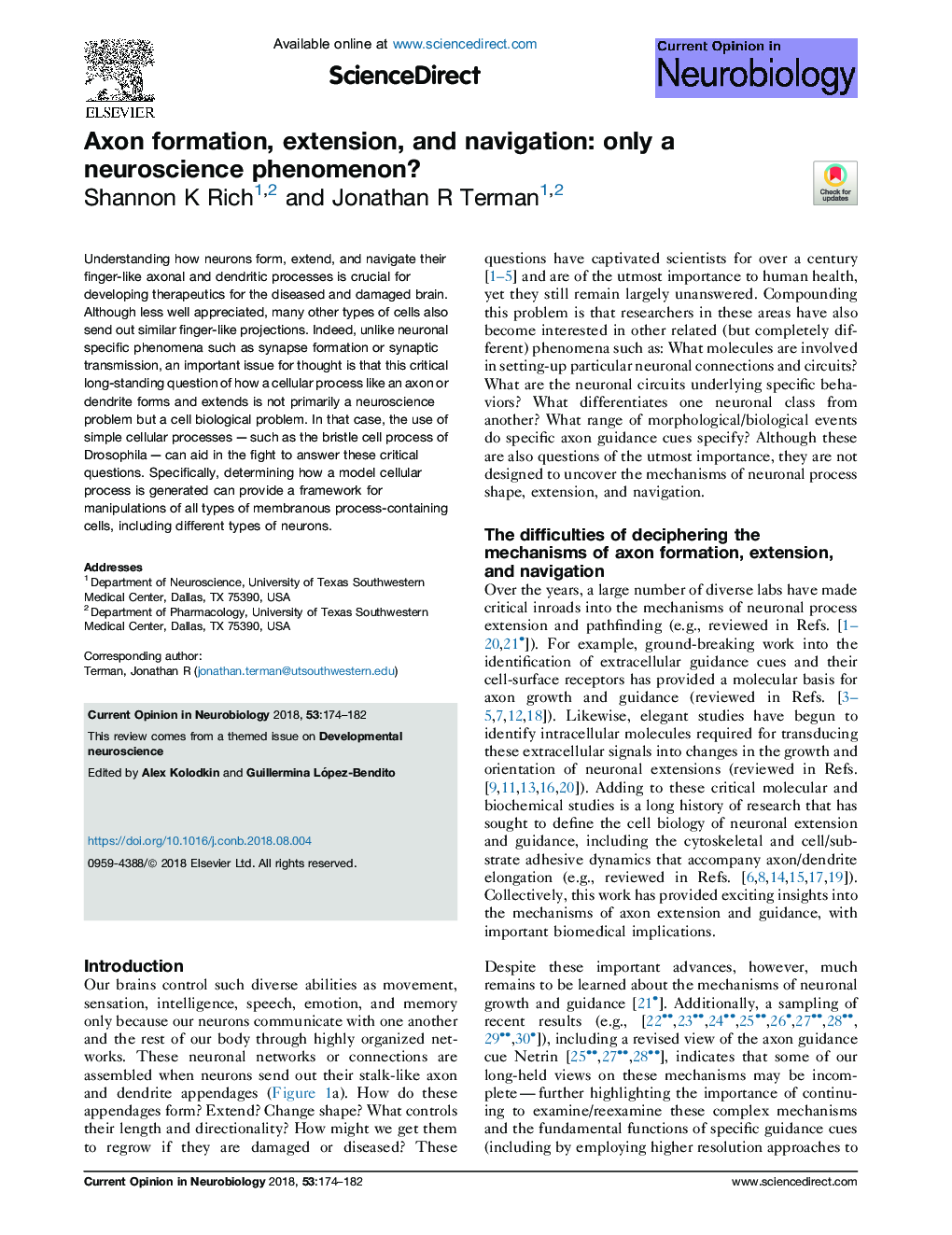| Article ID | Journal | Published Year | Pages | File Type |
|---|---|---|---|---|
| 11033446 | Current Opinion in Neurobiology | 2018 | 9 Pages |
Abstract
Understanding how neurons form, extend, and navigate their finger-like axonal and dendritic processes is crucial for developing therapeutics for the diseased and damaged brain. Although less well appreciated, many other types of cells also send out similar finger-like projections. Indeed, unlike neuronal specific phenomena such as synapse formation or synaptic transmission, an important issue for thought is that this critical long-standing question of how a cellular process like an axon or dendrite forms and extends is not primarily a neuroscience problem but a cell biological problem. In that case, the use of simple cellular processesâ-âsuch as the bristle cell process of Drosophilaâ-âcan aid in the fight to answer these critical questions. Specifically, determining how a model cellular process is generated can provide a framework for manipulations of all types of membranous process-containing cells, including different types of neurons.
Related Topics
Life Sciences
Neuroscience
Neuroscience (General)
Authors
Shannon K Rich, Jonathan R Terman,
